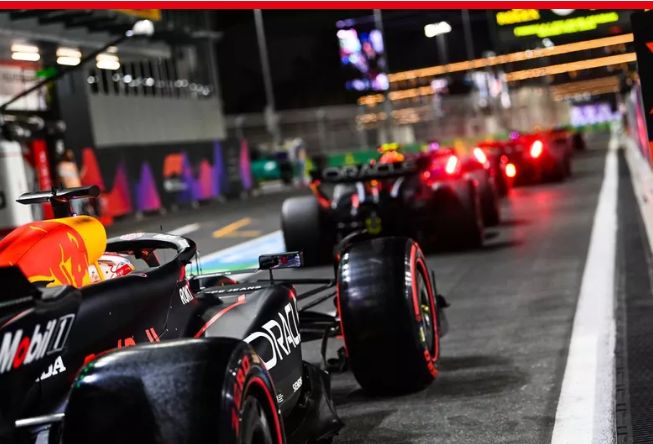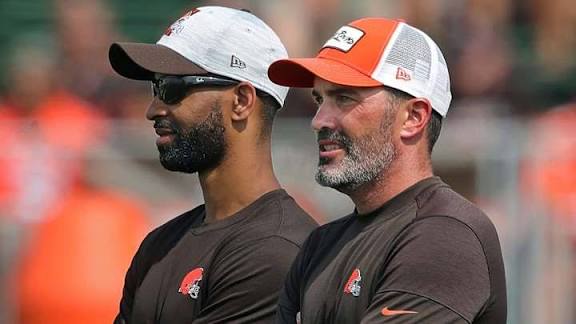1’s 2026 active aero plan set for change after alarming simulator findings
Formula 1’s active aero plans for 2026 are set for a revamp following some alarming findings in simulator running of an early car model, Autosport has learned.
As part of the effort to increase car performance to help accommodate the characteristics of the new turbo hybrid engines that feature a 50/50 power split between the internal combustion engine and battery, the new cars are going to have moveable aero.
The idea is that the car’s wings will be able to run in a high-downforce configuration in corners to help deliver grip, before shifting to a low drag configuration on the straights to help boost straightline speed.
One path being explored was for only the rear wing to be moveable, as it could then work easily in conjunction with DRS and would be the least complicated solution.
But it is understood that work has also gone into working out a way for the front wing to be active too, in a way that the elements help stall the aero – thereby reducing downforce and drag.
However, with some teams having recently been evaluating what is known as the baseline ‘Fangio’ car model in simulators to try to understand how this would work, some concerning characteristics emerged.
According to sources, when the rear wing was in its most low-drag configuration and the engine was at full power, the car was almost undriveable – with multiple examples of drivers spinning on straights under acceleration or being unable to take the smallest of curves without the rear stepping out.
This was triggered by a shift in aero balance that was estimated to be three times as much as is currently experienced when DRS is open.
One insider even suggested that the only way to prevent the cars spinning was to drive so conservatively that the lap times ended up being slower than current Formula 2 machinery.
It is understood that FIA representatives visited team facilities recently to get a better understanding of what is going on and what can be learned from the simulator findings.
And FIA sources have revealed that the conclusion has been reached that the moveable aero plan will not work with the way things have been tested at the moment.
Instead, the FIA has decided that the 2026 aero plan will need to incorporate both the front and rear wing working more in conjunction with each other if the cars are going to deliver the performance characteristics hoped for. This likely means something extra at the front.
By ensuring that the two wings work together, it should help reduce the aero balance offset that has been causing trouble in the simulator.
As efforts continue to frame the aerodynamic regulations before the end of June, Red Bull team principal Christian Horner said he welcomed the FIA listening to team concerns about what they were finding out.
He famously warned last year that there was a risk of F1 being left with ‘Frankenstein cars’ because of the way that the chassis rules had to fit around the choice of power unit.
“I think there’s been some good progression,” Horner told Autosport. “I think that the FIA have taken on board some of the feedback and some alterations have been made.
“We’re waiting for the chassis regulations, which will be a fundamental part of the 2026 package now and how that interacts with these power units.
“The various working groups are working hard on that and it’s important that we conclude something in the near future.”
Asked if the simulator findings from teams had been a cause for concern, Horner said: “The rules are the same for everybody at the end of the day.
“So, it’s how you apply them and translate them. I don’t think we’re afraid of whatever the rules will be, as it’s the same starting point for everybody.
“When they’re finalised, that’s when we’ll no doubt discover whatever issues there are with the rules, but that’s no different to any other regulation change.”
ARTICLEStella defends McLaren F1 team strategy in “complex” Japanese GP
NEXT ARTICLESuzuka sensation redeemed Alonso, but his F1 future is complicated
Why, oh why, oh why is F1 intent on decreasing the pureness of racing & the ability of drivers to make the difference…!!! Just as this set of rules is reaching car convergence, and apart from Red Bull, the other top four teams are nip & tuck at every race, with drivers making the difference (see Alonso Vs Stroll), why then do F1 want to ruin this & start again from scratch…!!!! Surely by now they know that every F1 fan on planet earth want’s one thing fixed more than anything else, the sound of the engines..!! The V8 were revving to over 20,000rpm and producing 800BHP+ , so why can’t we just have a normally aspirated V6 revving to say 16,000rpm producing say 650BHP then add in some battery boost top up to say between 800-1000BHP…!! Keep DRS which is easy to tweak at each circuit & maybe add an overtake button with limited use (like Indy car) to allow potential overtakes out of slower corners..!!
Please F1 don’t kill the sport……………..
11 RESPECTED
4 REPLIES
mikemasters14Apr 9, 2024, 8:11 PM
This is all because the new engine formula is a complete joke, especially when it is labelled as ‘green’.
So the plan is to have equal energy available from the ICE as the battery…but, doh, where does the battery energy actually come from? Oh yeah, apart from the regen under braking, the rest comes from the ICE. So to charge the battery, run the ICE to turn a generator to charge a battery, then discharge the battery to run electric motor to drive car. The efficiency of an electric motor/generator is around 95% each way, and the battery the same during rapid charge discharge. So the energy from using the hybrid system is only 87% of what was initially generated by the ICE for charging the hybrid.
That’s a loss of 13% of the fuel generated energy. Yes, very green. Actually much more efficient to use a bigger more powerful ICE and ditch the hybrid with its complications and significant weight.
Bear in mind that the ICE will be charging the battery during large parts of the lap. What a joke.
The only thing that is green about this is the rule makers.
Hate to say it, but Horner will probably be proved correct on this one!
7
Surely it’s time to move away from an aero formula. I think we’re all tired of cars not being able to race closely.
I’d rather sacrifice 20s of lap time to get some decent racing.
FORMULA 11 h
Horner has learned “not to listen” to Wolff over F1 title claim
RMULA 117 h
Sainz: Red Bull’s F1 advantage may be wiped away by Ferrari upgrades
FORMULA 12 d
The ironic reason Newey thinks Red Bull hasn’t been caught in F1 yet
Latest News
min
Why Craig Breen is remembered for his “heart on sleeve” approach
MGP47 min
Mir: Important for Honda “to take responsibility” for 2024 MotoGP bike woes
F11 h
Horner has learned “not to listen” to Wolff over F1 title claim
FE2 h
Misano E-Prix: Vergne heads practice as Cassidy suffers high-speed crash
Autosport Plus
PLUS
FORMULA 123 h
BY KEVIN TURNER
Ranking Derek Warwick’s top 10 greatest races
PLUS
FORMULA 12 d
BY JONATHAN NOBLE
The ironic reason Newey thinks Red Bull hasn’t been caught in F1 yet
PLUS
FORMULA 12 d
BY GP RACING
How a carryover Alpine blighted by politics gave Ocon an improbable F1 win
PLUS
FORMULA 13 d
BY JAKE BOXALL-LEGGE
The F1 breakthroughs Mercedes made in Japan – and what’s next


